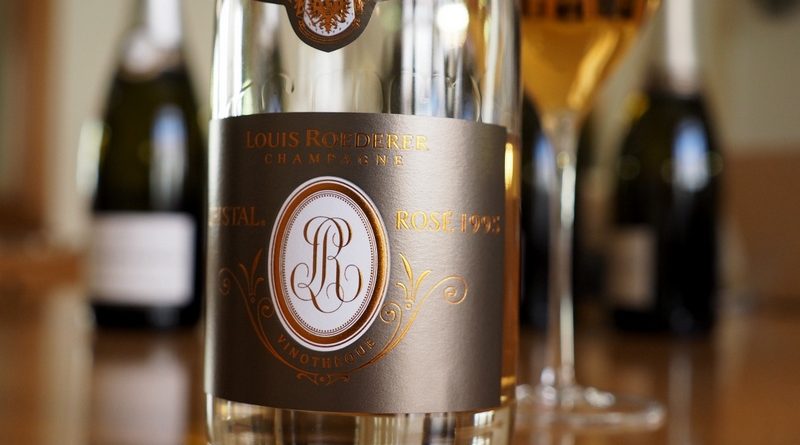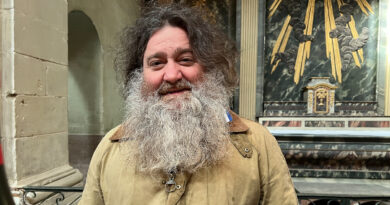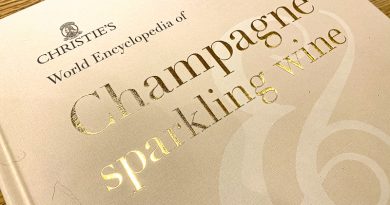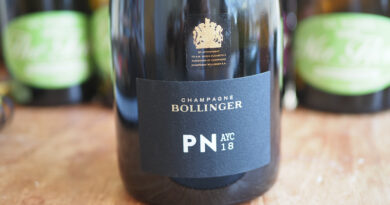In Champagne: Louis Roederer
Roederer is an elite house famous for their prestige cuvée, Cristal. But the real story here is a house that behaves more like a grower, and their key focus has been farming their 242 hectares of vines well. Goode and Ring visit with Jean-Baptiste Lécaillon to hear the story, and – of course – taste the wine.
It’s mid-March and as we visit, Chef de Caves Jean-Baptiste Lécaillon is in the middle of doing the vintage blends. He’s finished Cristal, and this week he’s going to be working on the Brut Vintage. The wines are then bottled and left on tirage, and the magic of champagne begins, transforming a somewhat tart and austere base wine into something altogether more appealing. ‘There’s still a little bit of work,’ he says. ‘Concentration!’
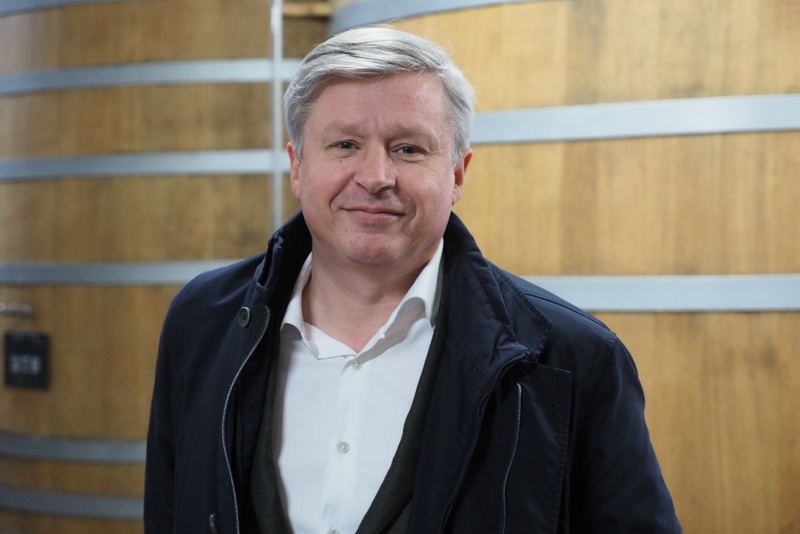
‘So what is Roederer?’ he begins. ‘It is a very special house, founded in 1776, and it’s been in the same family since 1800. Today, Frédéric Rouzeau the CEO and president is the seventh generation desendant of Louis Roederer. It’s a family business, family managed.’
Lécaillon is refreshingly open and friendly for someone in such an important position. He’s Vice President, in charge of production across all Roederer’s global wine ventures. This includes Château Pichon Comtesse in Bordeaux, Ramos Pinto in Portugal, Domaine Ott in Provence, and Roederer Estate in California. He’s been chef de caves at Roederer for 13 years now.
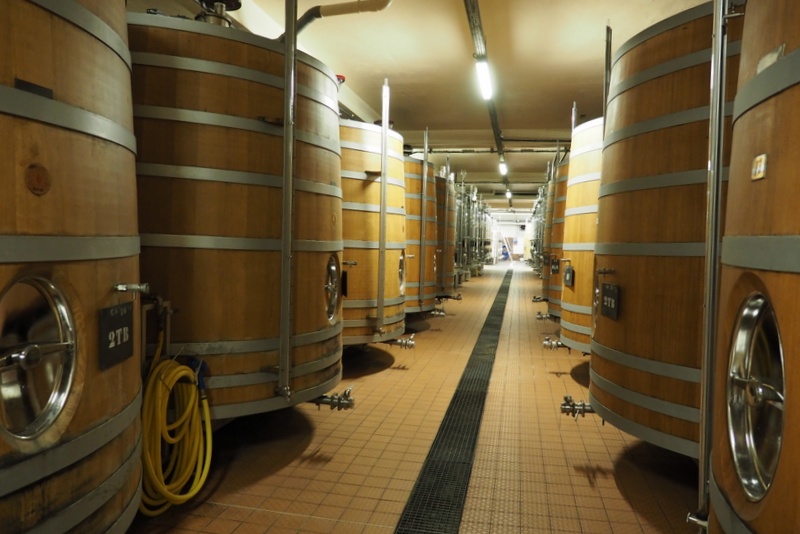
Lécaillon says that in terms of running things, he’s lucky that the family isn’t too big. ‘There are just 10 family members so it is a short shareholding – this is very important and gives us a lot of control,’ he says. ‘When we decide we decide.’

It’s in the vineyards that Roederer particularly stand out as a house. ‘We have a special way of looking at our vineyards,’ says Lécaillon. They have a lot of these: 242 hectares. This is more than 70% of their needs, and all the Roederer vintage wines are 100% estate grown. ‘We are a grower,’ says Lecaillon. ‘When you taste Vintage Roederer – Cristal, Cristal Rosé, Blanc de Blancs, Vintage, or Vintage Rosé – we are a grower.’ It’s only for the NV Brut Premier that they buy grapes. ‘We buy mainly Meunier, because our vineyards are mainly located in Grand Cru or Premier Cru, and as you know these are mostly Pinot Noir and Chardonnay.’ 60% of the Roederer vineyards are Pinot Noir and 40% are Chardonnay. ‘I only have 6 hectares of Meunier. This doesn’t mean we don’t like Meunier: it just means that we have soils that are chalky. Chalk is not a Meunier soil.’

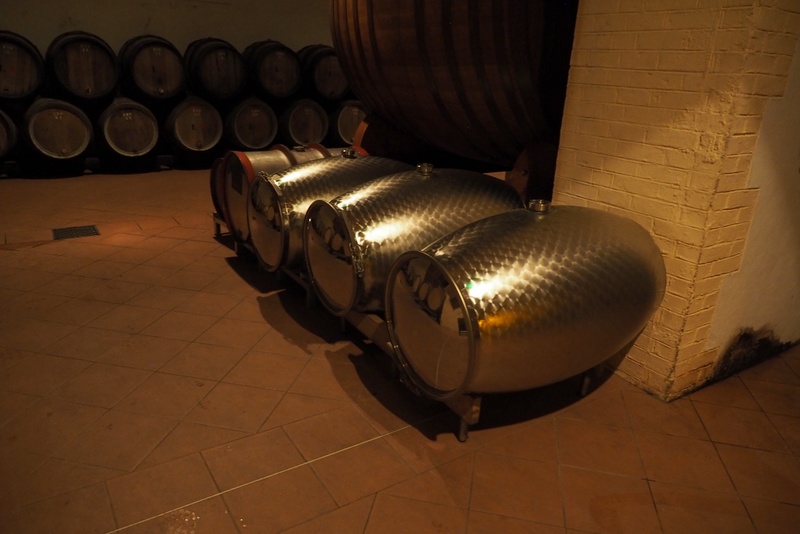
‘Our biggest vineyards are in the Côtes des Blanc, with more than 80 hectares.’ Roederer have a vineyard team based in Avize. They also have a team in Aÿ, where they have 65 hectares, and two further teams each responsible for different areas, including one looking after some 70 hectares in the Montagne de Reims.
In the village of Bolouse they have a very important vineyard. With 11 out of the village’s 13 hectares, they effectively own it. ‘It’s very important because it is a bit away from the mainstream of vineyards and we have all our nursery there: we do all massale selection and grow all our own rootstocks,’ says Lecaillon. ‘We have the unique position in Champagne of having our own private nursery. We are the only house with this position.’ They have been granted the status of ‘pepiniériste privé’ which allows them to do this. ‘We believe the challenge of the 21st century will be genetic. This is why we really focus on massale selection and we believe there is a huge biodiversity that we can explore,’ says Lécaillon. ‘This could answer a lot of questions of the 21st century, such as climate change. We have some Pinot Noir clones that can ripen three weeks apart. From one Pinot Noir to another you reach the same alcohol level with three weeks difference. This is huge. In the context of global warming you can imagine planting late-ripening Pinots as opposed to the early-ripening Pinots planted in the 1960s and 70s.’
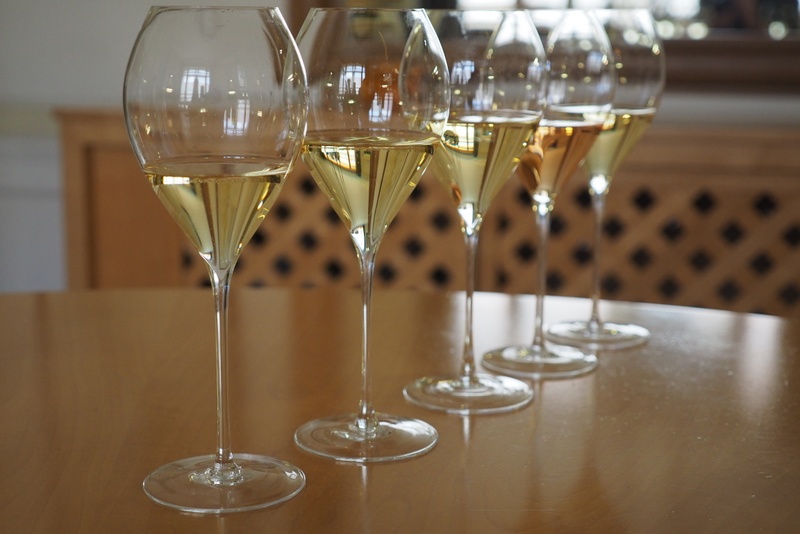
Roederer are actively searching for pre-1960s vineyards, before clonal selection, to find new plant material, both in their vineyards and those of others. ‘Last year with some growers we created a massale selection group,’ he says, ‘and we share our discoveries.’
‘We know now that after one or two generations Pinot Noir can develop some environmental variations. It mutates. So it is important for us to maintain this collection.’ Does he see the same with Chardonnay? ‘No, Chardonnay is much more stable. It all comes back to our domestication of the grape varieties. Chardonnay was domesticated in 1880, so it is a recent domestication, while Pinot Noir was domesticated in the middle ages. We have a thousand years of domestication of Pinot Noir. Nebbiolo was domesticated 2000 years ago.’
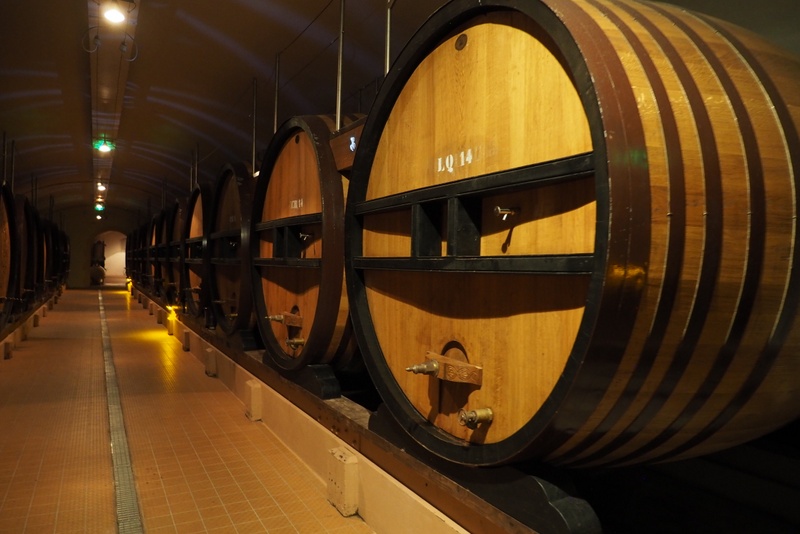
Is there any interest in the other Champagne varieties? ‘We are working on Petit Meslier. We have stopped because we were not happy with it. It was lacking terroir expression in all the trials we did. We wanted to try Arbanne, but it is very difficult to find the real Arbanne. Many people talk about Arbanne but they are not growing Arbanne. We have a massale selection of Pinot Blanc that I found in Aube. I am developing this, because I think in Pinot Blanc there are more answers that I am looking for.’
Would you expect to find the same genetic lability with Pinot Blanc, as with Pinot Noir, considering that they are almost completely the same? ‘Yes. And Pinot Blanc also has an ability to be oak-fermented,’ he adds. ‘I am very interested in bringing back oak fermentation to add sweetness to balance the acidity. This is an important step in the making of our wines so I wanted a grape variety that is able to face this.’
One of the most encouraging aspects of Roederer’s vineyard work is their commitment to organics. ‘Out of the 242 hectares, we have 122 hectares – a bit more than half – organically certified,’ says Lécaillon. ‘We are increasing our certification every year. We have 10 hectares that are Demeter biodynamic certified as well, but we do biodynamics on all the estate. All the organic vineyards, except three plots that we keep as a control, are biodynamically farmed. We do all our biodynamic composts, we do the preps on all the organic estate.’ He explains that the reason they aren’t biodynamically certified on more of the vineyard area is a legal one. ‘I can be organic, but I cannot be Demeter because I am fermenting some wines here that are not Demeter certified. If you want to be Demeter certified you have to be 100%, and for Brut Premier I am buying fruit.’
‘We started our conversion to biodynamic farming in 2000,’ he reveals. ‘We switched the estate slowly. In 2007 all Cristal Rosé was biodynamically farmed. Since 2012, Cristal is completely farmed biodynamically, and since 2006 we have Brut Nature that is 100% biodynamically farmed.’
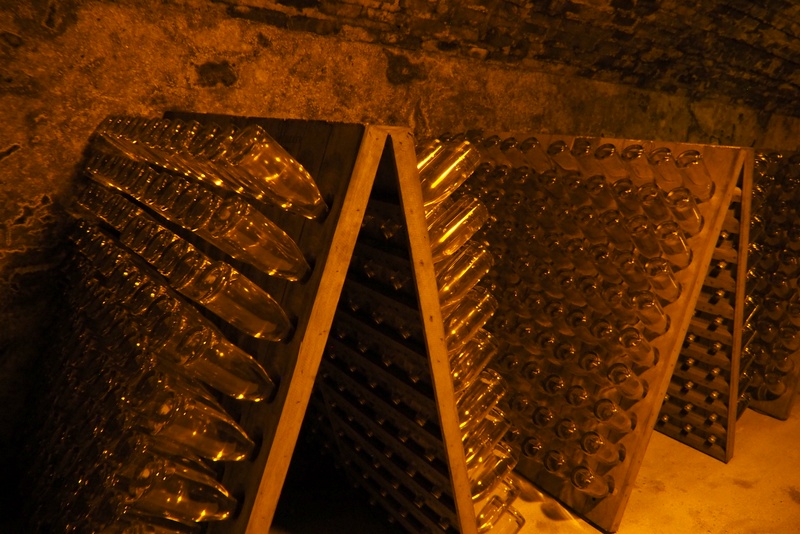
What are the main challenges working biodynamically in Champagne? Disease or weed control? ‘Weed control is not the problem, it is mildew. Downy mildew is a real problem especially at flowering time. It is actually quite simple in a way: there are two or three weeks around flowering that are complicated. Before it is easy and after it is easy. In those three weeks you can lose 30% of the crop if you don’t position your spray or preps at the right moment. You need to be very powerful at this moment to be able, in a few hours, to be in your vineyards, even if it is a Saturday or Sunday. This is the challenge, especially on a large scale.’
‘If you have fewer than 10 hectares in Champagne, it is super-easy to be biodynamic. It is like in Burgundy: we have a bit more water maybe, but it is not more complicated. If you are on a scale of 120 hectares with different locations, that is complicated. There are a lot of logistics.’
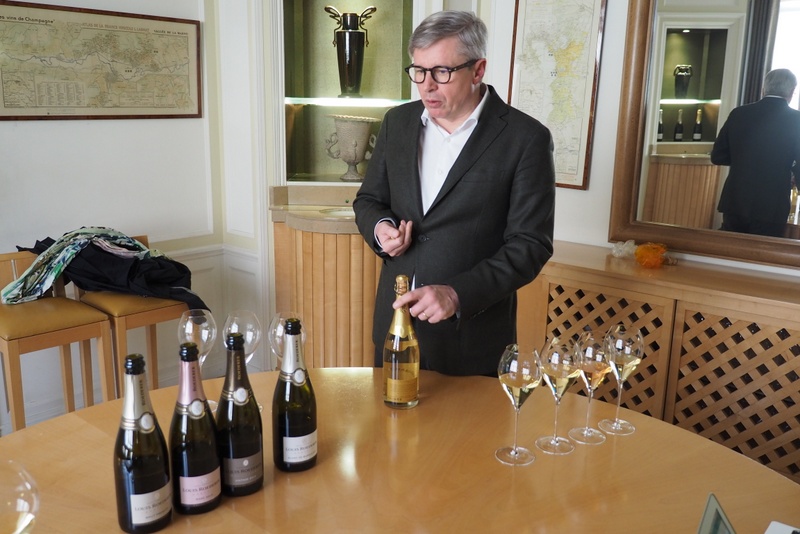
Lécaillon continues. ‘The real challenge is to learn at the same time to be super-active but also to take your time. It is a complex attitude. Taking your time means waiting for the right moment and trusting nature to a certain point, and to define the moment where you need to act. You must not act preventively: you must act when it happens. This is the big difference between chemistry and biodynamics.’
Have you lost any crop? ‘Yes, in 2012 I lost 10 hectares. But I don’t put this down to the difficulty of biodynamics. I put it in the reset of your attitude. You cannot switch from chemistry to biodynamics just by saying ‘I’m changing’. You have to reset your mind. If I made a mistake in my first 10 years of biodynamics, it’s because I was thinking in the old way, trying to do the new way with my old way of thinking.’
‘The second mistake people often make is, because they are scared, they want to act a lot. In fact, sometimes you need to not act. Not acting is really important in the way we look at vineyards because often nature can solve the problem itself. You have to act at the right moment, with a large team. You have to convince people.’
Roederer stopped using herbicides in their vineyards in 2000. ‘We have 122 hectares certified organic, but all the other is certified sustainable, with VDC (Viticulture Durable Champagne) and HVE3. It is a good system, but it is the minimum. It is just to say this is what we should have always done. Some people see HVE3 as a target, but it is just a basic level to come back to where our grandparents were.’
Has there been a big change in the attitudes to viticulture in Champagne? ‘Yes, in Champagne it is slowly coming. It started moving seriously in 2014, when we created the VDC certification. Then everyone understood that they had to enter. What is interesting in organic certification, biodynamic certification or even HVE/VDC certification is that you are into it. You audit your own performance. When you are outside of it you can do whatever you want. I think it is important to enter into one type of certification. It asks for a lot of knowledge.’
Like all of Champagne, Roederer picks by hand. They press their Chardonnay in Avize and their Pinot Noir in Marne La Vallee and Verzenay. The juice settles in the press houses and then comes to their winery for fermentation. Is pressing a critical stage? ‘Yes it is,’ says Lécaillon, ‘because of the way you must adapt your pressings to the ingredient. You need to adapt your press, and the way you treat your juice with sulfites or without, for example. With Chardonnay, I never sulphite at the pressing. I let them oxidize: they are brown or black. This is important for me to get rid of a lot of phenolics. I want to get more mineral, expressive Chardonnays. Pinot Noir has to be treated another way, which is a softer pressing. When you press Pinot Noir you have to be very gentle and you have to be protective. When you press Chardonnay you don’t have to be gentle or protective. The less you protect it the better it is as a wine. They are completely different animals. You don’t press a ripe vintage the same way as an unripe vintage, and if you have a wet summer you don’t press in the same way as a wet summer. In a dry summer you will have a thicker skin; if you have a wet summer you will have a lot of juice.’ He adds, ‘I settle very little. I keep cloudy juice.’
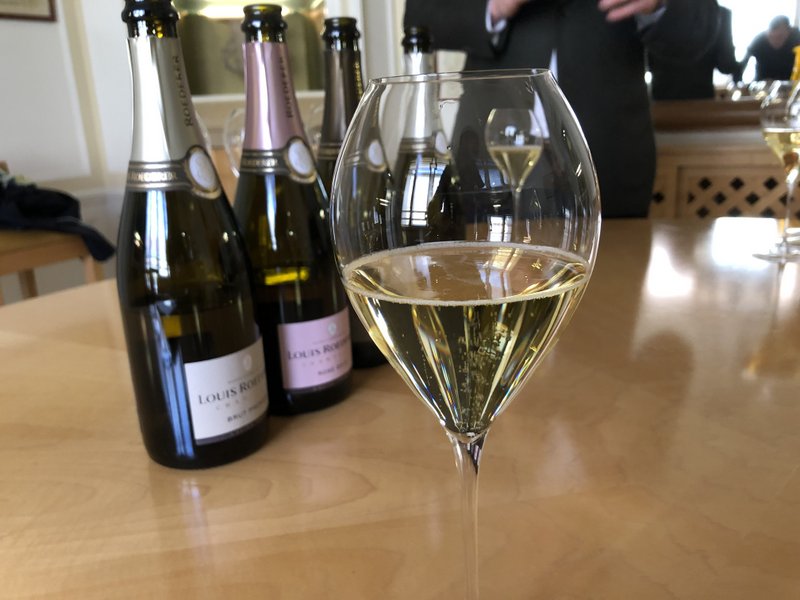
THE WINES
Champagne Louis Roederer Brut Premier NV
Base wine 2013. Disgorged in 2017, 9 g/l dosage. Roughly 40 Pinot Noir, 40% Ch and 20% Meunier. The 2013 was a Pinot Noir year so it is 42% PN. 25% reserve wines, from seven different vintages, from large oak (15% is the previous year’s blend, 10% from oak). Malolactic is partial. This has lovely generosity, with nuts, toast and spice. There’s lovely intensity here with cherries, herbs and citrus, as well as some peach and toast. This has freshness and salinity, but also lovely richness. Very impressive. 93/100 (JG)
This is roughly a 40/40/20 mix of Pinot Noir, Chardonnay and Pinot Meunier, incorporating 25 percent reserve wines dating back to 2006. Said reserve wines rest in oak casks for 2-8 years before incorporation into the blends, one of the keys to the house style. This spends three years on the lees, and undergoes 40 percent MLF (but never MLF for Chardonnay). You can use the code on the back of the label to look up the dates on your particular bottle. Mine was based on 2013, bottled in 2014, and disgorged in 2017 with 9 g/l. Elegant, as ever, with toasted hazelnuts, brioche, Meyer lemon pith, salted lemon peel and an upright backbone of acidity that runs the long length of the palate. This lingers with an alluring shimmer, welcoming glass after glass, solo or with food. Legendary NV for a reason. 92/100 (TR)
Champagne Louis Roederer Vintage Rosé 2013
Cumieres Pinot Noir balanced with Chardonnay from Chouilly. 9 g/l dosage, 63% Pinot Noir, 37% Chardonnay. Infusion technique for making rosé: the grapes are picked, cooled overnight, then destemmed and put into a tank for 7-10 d infusion without fermentation. So it is a blend of saignee of Pinot Noir without fermentation with Chardonnay. 15% oak fermentation, so as not to lose the fruit. This is taut and delicate with compact cherry and citrus fruit, with high acidity. Juicy and mineral at the same time. Grapefruit, red cherries, lemons and cranberries with lovely precision. There’s a real purity to this wine. So focused. 93/100 (JG)
The 63% Pinot Noir comes from the steep clays of Cumieres, providing an alluring spicy expression to fruit. The remainder is Chardonnay from north facing, chalky slopes of Chouilly. This Rosé is made differently than most in Champagne, using neither blending or saignée, but rather infusion. The Pinot Noir grapes macerate in cool store overnight, then are destemmed and into tank for 7-10 days without fermentation or crushing. When starting to bubble, around 10-12C, the juice is racked and then Chardonnay added and fermentation begins all together as a white wine, with no skins. From 35 parcels and the cool climate 2013, this is juicy and bright with raspberry, cherry, red apple and laced with grapefruit acidity. You feel a little toast on the finish (never more than 15% oak fermentation on the Chardonnay), along with a lovely floral spiciness on the finish. 92/100 (TR)
Champagne Louis Roederer Brut Vintage 2012
North-facing Pinot Noir (Verzey, rocky soils, concreted chalk) with south-facing Chardonnay (Chouilly, SE facing, on the border of Cramant). This wine has more chalk than the rosé. 25-30% oak aged, no malolactic fermentation. Zesty, lively nose with subtle toast and lovely citrus, as well as some richer apricot notes. The palate is mineral and saline with good acidity. Juicy lemons and grapefruit with subtle almond and herb notes. Fresh palate with lovely precision. A lovely expressive wine with a long, mineral finish, finishing with cherries and plums, and more of that apricot richness. 94/100 (JG)
This 70/30 PN / Chard blend is sourced from 10 parcels, with the PN coming from north facing, rocky Verzey, and Chardonnay from very chalky south-east facing sites in Chouilly. One quarter of this was oak aged, and No MLF was employed in the generous 2012. Deep and creamy, with biscuit and subtle cherry patisserie cut and brightened with chalky mineral salts, finishing with a charming lemon astringency. 93/100 (TR)
Champagne Louis Roederer Blanc de Blancs 2011
Four parcels all in Avize. The pressure is low. No malolactic: they never do MLF on Chardonnay. This has toast and lemons with some herb and cabbage. Rich with some development and fine toast and spice. Has some depth here: this has some herb and cabbage and a bit of grip, and notes of marzipan and wax. Has depth and focus, with lovely complexity. Quite a bold, rich wine, but still has precision. 93/100 (JG)
From four parcels in Avize, this was created with the idea to make a single village wine. Since 2010, the Blanc de Blancs has been sourced entirely from the chalky, nervy Avize, giving this wine a greater identity. After 25% oak fermentation, and no MLF (never for Chardonnay), this was kept at 4 bars pressure, Cramant-style. Very precise and elegant on the long, streamlined palate, with whiffs of anise darting around crystallized lemon, green apple, and mineral salts. A more serious, broody, savoury blanc de blancs. 94/100 (TR)
Champagne Louis Roederer Cristal 2008
‘The Cristal of Cristals, not because it is the best but because it is the archetype of Cristal,’ says Jean-Baptiste Lécaillon. Launched 2009 before this, and this is now the current vintage. 2012 will be the next. 7.75 g/l dosage. 45 parcels, used 37 of them – disqualified eight parcels of Pinot Noir. 25% oak fermentation. ‘We didn’t see 2008 at the beginning,’ says Jean -Baptiste Lécaillon. Incredible aromatics here: very fine toast and bread notes, some lemon peel, and focused citrus fruit. It’s linear and focused on the palate with fine lemon notes, good acidity, a saline, chalky edge, and fine herbs and spice. There’s a really nice linear quality to this wine. It is brisk and a little austere, but it has harmony and the acidity is well integrated. Lovely mineral freshness and complexity from a long, dry, cool summer, and chalky soils. Light and elegant at the end. A thrilling wine. 96/100 (JG)
This Cristal is quite unique, as it was released after the early-drinking 2009. 2008 was a very tricky vintage, cool and dry. 37 plots were used in this blend, while 8 Pinot Noir parcels typically in play were disqualified for not being excellent enough. The final cépage saw 25% fermented in oak, and 16% MLF, with 10 years on lees before a 7.75g/l dosage. Very complete and complexed, with lemon curd, creamed corn, dough and kisses of vanilla on the powerful, oily palate. Tight searing lemon pith lifts, while deep chalk bases, finishing with a lingering vibrancy. This is the archtype of Cristal, very much in youth, but presenting with elements of maturity. 95/100 (TR)
Champagne Louis Roederer Cristal Rosé 1995
Kept on lees 8 year sur lattes, riddled and put upside down, disgorged after 14 years, low dosage (6-7 g), kept in the cellar for 8 years. This is an astonishing wine. Toast, spice, nectarine, lemons and a hint of maturity. There’s cherry and spice here, with a real sense of harmony. Wax and pear and spice – this is still Cristal, with salinity, freshness and elegance, but there’s a beautiful harmony and maturity, and just a hint of caramelization that binds everything together in real purity and focus. Marzipan and nuts, too. Such a wine. 97/100 (JG)
What a stunner. From two Pinot Noir sites in Aÿ, and Chardonnay from one parcel in Avize, and one in Aÿ. This wine remainder longer sur latte, 8 years, and was then riddled sur pointe for 6 years on crown cap. After 14 years, it was disgorged with 6 g/l, then cellared 8 more years before release. Cristal is best realized after 20 years, and this wine is certainly still very fresh and vital. Slight oxidative curls are creeping in alongside red apple and subtle smouldering caramel kisses on the nose and front, before the palate streams bright and crisp. The harmony between red fruits, light smoke, and savoury brown butter notes is fantastic, drawn long to the very end of this elegant wine. Exceptional length and persistence. 96/100 (TR)
See also: Beyond grower Champagne: where have all the growers gone?
Find these wines with wine-searcher.com

